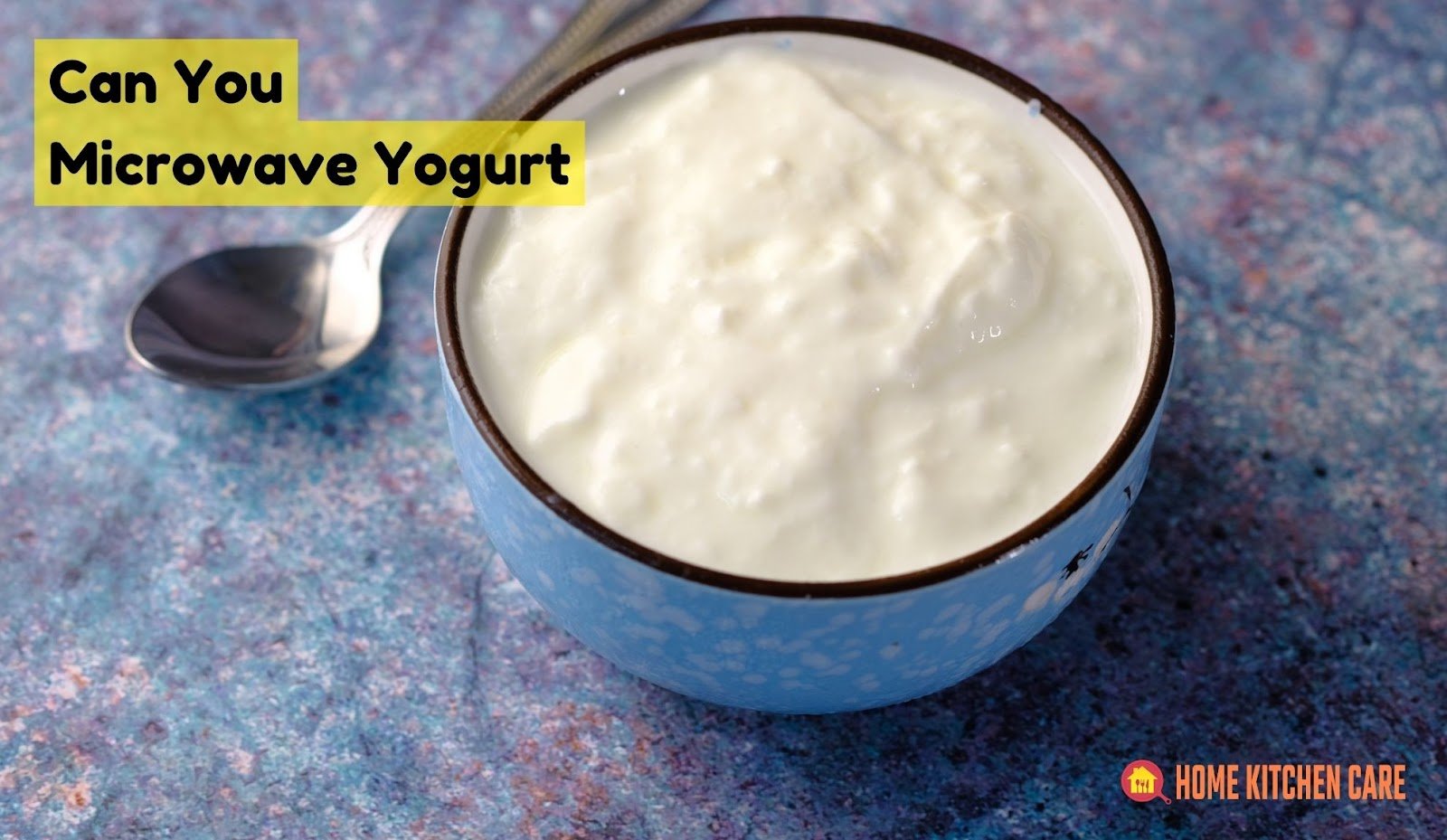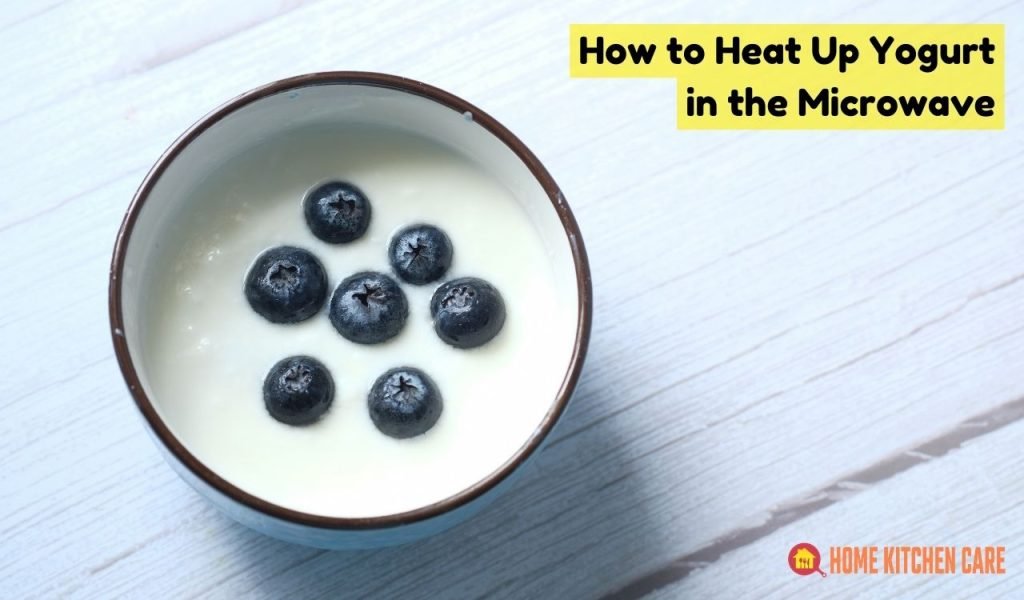Physical Address
304 North Cardinal St.
Dorchester Center, MA 02124
Physical Address
304 North Cardinal St.
Dorchester Center, MA 02124

Can you microwave yogurt? Find out the truth about this popular kitchen query. Whether you’re craving a warm yogurt snack or curious about incorporating it into your favorite recipes, microwaving yogurt might just be the solution. In this guide, we’ll dive into the dos and don’ts of microwaving yogurt, providing you with the essential tips and insights you need.
Discover the safe and effective ways to heat up your favorite creamy treat and unlock a world of culinary possibilities. Say goodbye to the guesswork and embark on a microwave yogurt adventure with confidence. Let’s explore the answers and unleash the potential of your microwave and yogurt combination.
Main Summary: Can you microwave yogurt?
Microwaving yogurt is possible, but it requires caution. Avoid metal containers, use short intervals, and stir in between. It’s best for tempering or adding warmth to recipes. Don’t overheat to prevent curdling. Avoid microwaving yogurt with additives like fruit chunks or sweeteners.
Making yogurt in the microwave is a quick and convenient method that many people swear by. The process involves a few simple steps and can be done in a matter of minutes. Here’s a breakdown of how you can make yogurt in the microwave:
To begin, you’ll need a yogurt starter. This can be a small amount of plain yogurt or a powdered starter culture that contains live yogurt bacteria. The starter will introduce the beneficial bacteria necessary for the fermentation process.
Take a microwave-safe container and pour in the desired amount of milk. Whole milk or 2% milk is commonly used for making yogurt. Heat the milk in the microwave until it reaches a temperature of around 180°F (82°C). Heating the milk helps to kill any undesirable bacteria and enzymes that may interfere with the yogurt-making process.
Once the milk has reached the desired temperature, remove it from the microwave and allow it to cool down to around 110°F (43°C). You can speed up the cooling process by placing the container in a bowl of ice water. Once the milk has cooled, add the yogurt starter and mix it well to ensure even distribution of the bacteria.
Cover the container with a microwave-safe lid or plastic wrap and place it back in the microwave. Set the microwave on its lowest power setting or the “warm” setting if available. The aim is to maintain a consistent temperature of around 110°F (43°C) for the next 6 to 8 hours to allow the yogurt to ferment. The length of incubation can vary depending on your desired level of tartness and thickness.
Once the incubation period is complete, carefully remove the container from the microwave and place it in the refrigerator. Let the yogurt chill for a few hours or overnight to allow it to set completely.
If you prefer a thicker Greek-style yogurt, you can strain the yogurt using a cheesecloth or a fine-mesh strainer. This step helps remove excess whey, resulting in a creamier and denser yogurt.
Congratulations! You have successfully made yogurt in the microwave. Remember to reserve a small portion of this batch as a starter for your next yogurt-making adventure.

One common question that arises when it comes to microwaving yogurt is whether it is safe to heat it in its original container. While some yogurt containers are labeled as microwave-safe, it’s important to exercise caution and check the packaging instructions before microwaving.
Most plastic yogurt containers are not intended for high-temperature applications, such as microwaving. Microwaving them can cause the plastic to warp, melt, or release harmful chemicals into the food. It’s best to transfer the yogurt into a microwave-safe container before heating.
If you’re unsure about the microwave safety of your yogurt container, follow these steps:
Carefully scoop the desired amount of yogurt into a microwave-safe bowl or dish. Make sure the container you choose is labeled as microwave-safe and is large enough to prevent any spills or overflowing during the heating process.
To avoid overheating or causing the yogurt to bubble over, microwave the yogurt in short intervals. Start with 15 to 20 seconds on medium power and check the temperature before continuing. Repeat the process until the desired temperature is reached. By transferring the yogurt into a microwave-safe container, you ensure the safety of both the yogurt and yourself.
Heating yogurt can cause some noticeable changes in its texture and taste. When yogurt is exposed to heat, particularly high temperatures, several things happen:
The heat causes the proteins in the yogurt to denature, which alters their structure. This can result in a thicker and more gel-like consistency.
Yogurt contains beneficial bacteria known as probiotics. These bacteria thrive at lower temperatures and can be adversely affected by high heat. Heating yogurt may reduce the number of active probiotics, potentially diminishing the yogurt’s health benefits.
Heating yogurt can cause liquid separation, with whey (the watery portion of yogurt) separating from the curd (the solid portion). This separation may lead to a watery consistency.
The flavor and aroma of yogurt and microwave sour cream can be altered when exposed to heat. They may develop a slightly sour taste or experience flavor changes due to the breakdown of certain compounds. Overall, heating yogurt and microwave sour cream can result in changes to their texture, probiotic content, and taste. It’s important to consider these factors when deciding how to incorporate yogurt and microwave sour cream into your recipes or meal preparations.

Heating up yogurt in the microwave is a simple process that can be done when you prefer warm or heated yogurt in your recipes or meals. Here’s how you can heat up yogurt in the microwave:
Select a microwave-safe bowl or dish that is large enough to hold the desired amount of yogurt without overflowing during the heating process. It’s essential to choose a bowl that can withstand microwave heat without melting or warping.
Carefully transfer the desired amount of yogurt into the microwave-safe bowl. Ensure that the bowl is clean and dry before adding the yogurt.
Place the bowl of yogurt in the microwave and heat it in short intervals. Start with 15 to 20 seconds on medium power. After each interval, remove the bowl from the microwave and stir the yogurt to distribute the heat evenly. Continue heating in short intervals until the desired temperature is reached.
Before consuming or using the heated yogurt, ensure that it has reached the desired temperature for your intended purpose. Use a food thermometer if necessary to confirm the yogurt’s temperature. Remember to exercise caution when handling the heated yogurt, as the bowl may become hot during the microwaving process. Enjoy your warm yogurt in recipes, as a topping, or as a comforting treat.
When it comes to microwaving yogurt, it’s important to exercise caution and avoid excessive heating. Microwaving yogurt for an extended period can lead to overheating and undesirable changes in its texture and taste.
The maximum microwaveable time for yogurt depends on the quantity and the desired temperature. As a general guideline, it’s recommended to heat yogurt in short intervals, typically starting with 15 to 20 seconds on medium power. After each interval, check the temperature and continue heating in short bursts if needed.
To ensure the best results and preserve the quality of the yogurt, it’s advisable to avoid microwaving for more than 1 minute in total. However, individual microwaves may vary in power, so it’s crucial to monitor the yogurt closely and adjust the heating time accordingly. Remember that the goal is to heat the yogurt gently and gradually, ensuring it reaches the desired temperature without overheating or compromising its quality.

Making yogurt in the microwave can be safe if certain precautions are taken. Learn how to make yogurt safely in the microwave with this simple and efficient method. Discover the steps to heat milk, add yogurt starter, and ferment the mixture for delicious homemade yogurt while ensuring safety. Here are some tips to ensure the safety of your yogurt-making process:
Select a microwave-safe container that is labeled as such. Avoid using containers made of materials that are not suitable for high-temperature applications, such as certain plastics or metals.
Heat the milk to the desired temperature of around 180°F (82°C) to kill any unwanted bacteria. Ensure that the milk cools down to around 110°F (43°C) before adding the yogurt starter. These temperature ranges help create an ideal environment for the beneficial bacteria to thrive while minimizing the risk of harmful bacteria growth.
Make sure all utensils, containers, and surfaces are clean and sanitized before starting the yogurt-making process. This helps prevent contamination and the growth of harmful bacteria.
Wash your hands thoroughly before handling the milk, starter, or any other ingredients. Clean hands reduce the chances of introducing unwanted bacteria into the yogurt.
Stick to the recommended incubation time provided in your yogurt recipe. Over-fermentation or extended incubation periods may increase the risk of bacterial growth and compromise the safety of the yogurt.
After the yogurt has completed the incubation period, promptly place it in the refrigerator to halt further bacterial growth. Keeping the yogurt at a cool temperature helps maintain its freshness and safety. Remember, while these steps can help make yogurt in the microwave safe, it’s always important to use caution and follow proper food safety practices to minimize any potential risks.
Making yogurt in the microwave can be a convenient and efficient way to enjoy this delicious and nutritious treat. By following the proper steps and ensuring safety measures, you can create homemade yogurt that is both tasty and safe to consume. Remember to choose a microwave-safe container, heat the milk to the appropriate temperature, and maintain cleanliness throughout the process.
Additionally, handle the ingredients with clean hands, adhere to recommended incubation times, and refrigerate the yogurt promptly. Experiment with different flavors, toppings, and mix-ins to customize your homemade yogurt to your liking. Whether enjoyed on its own, as a base for smoothies, or as a healthy addition to various recipes, homemade yogurt offers a versatile and satisfying option.
So, go ahead and embark on your yogurt-making journey with confidence. With the right techniques and a little creativity, you can enjoy the goodness of homemade yogurt right from your microwave. Stay safe, have fun, and savor the delicious results!
While you can make yogurt in the microwave, cooking yogurt in the microwave is not recommended. Yogurt is already a fermented product, and subjecting it to high temperatures can alter its texture and taste. It’s best to use the microwave for heating or warming yogurt rather than cooking it.
Yes, it is perfectly fine to heat yogurt. In fact, many people enjoy warm or heated yogurt in various recipes and preparations. Heating yogurt can enhance its versatility and make it a comforting ingredient or standalone treat. Just remember to heat it gently and avoid prolonged exposure to high temperatures to maintain its quality.
Yes, you can heat up Greek yogurt in the microwave. Greek yogurt is known for its thick and creamy texture, which holds up well when heated. Whether you want to incorporate it into recipes or enjoy it warm, microwaving Greek yogurt is a convenient way to heat it.
Absolutely! Microwaving yogurt to reheat it is a quick and easy method. Simply transfer the desired amount of yogurt into a microwave-safe bowl, and heat it in short intervals, stirring in between until it reaches the desired temperature. However, be cautious not to overheat the yogurt, as it may result in changes in texture or flavor.
Heating yogurt is not inherently bad. In fact, heating yogurt can enhance its taste, make it more versatile, and allow it to be used in various recipes. However, it’s essential to heat yogurt gently and avoid excessive temperatures to prevent undesirable changes in texture and the potential loss of beneficial bacteria.
It is generally not safe to microwave a carton of yogurt. Most yogurt cartons are not designed for microwave use and can release harmful chemicals when exposed to high temperatures. It’s best to transfer the desired amount of yogurt into a microwave-safe container before heating it in the microwave.
Yes, it is possible to turn milk into yogurt using a microwave oven. The process involves heating the milk to a specific temperature, adding a yogurt starter, and then incubating it at a controlled temperature for fermentation. The microwave can be used to heat the milk, but it’s important to follow a specific method and ensure proper temperatures for successful yogurt-making.
Yes, you can heat milk for yogurt in the microwave. Heating the milk is an essential step in yogurt-making, as it helps sterilize the milk and prepare it for fermentation. Heat the milk to the desired temperature, typically around 180°F (82°C), in the microwave before cooling it down and adding the yogurt starter.
Yes, it is absolutely okay to eat microwaved yogurt. As long as the yogurt has been heated gently and not exposed to excessive temperatures, it remains safe and delicious to consume. Microwaving yogurt is a common practice for warming or incorporating it into recipes, providing a convenient way to enjoy its benefits.
It is not advisable to microwave frozen yogurt directly. Microwaving frozen yogurt can lead to uneven heating, causing some parts to melt while others remain frozen. It’s best to thaw frozen yogurt in the refrigerator or at room temperature before heating it in the microwave if desired. This ensures a more consistent and controlled heating process.